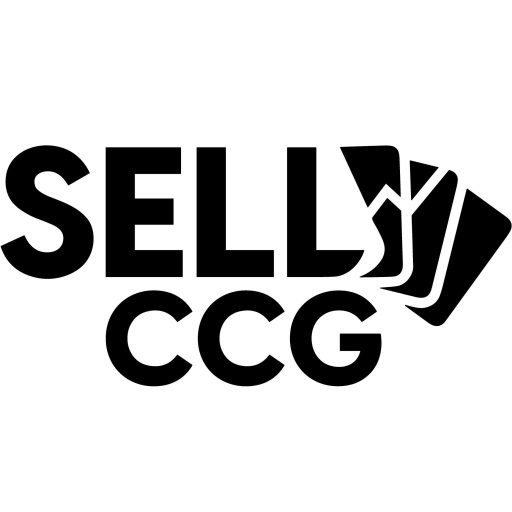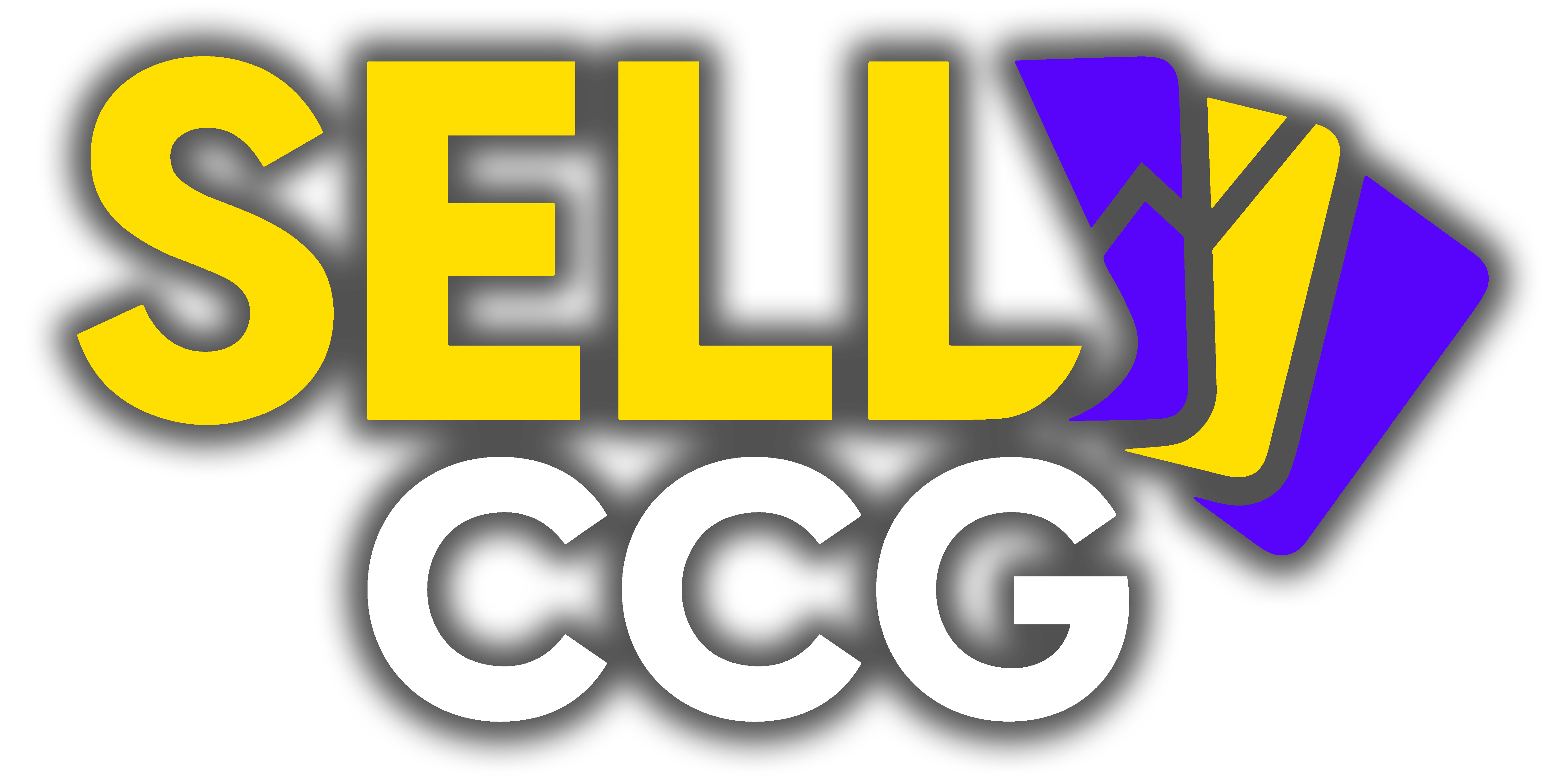Discover how to identify valuable Pokémon cards by era, rarity, condition!

So, you've come across some Pokémon cards at a yard sale, flea market, or maybe you're just dusting off your old childhood collection.
Now you’re wondering, how much are these things worth? Well, you’re in luck because we’re here to break down the factors that make a Pokémon card valuable, based on the age and era of the cards. There are three main eras of Pokémon cards to consider: the WoTC (Wizards of the Coast), Mid Era, and Modern Pokémon Cards. Let’s take a look at era, and key indicators to look for, to determine which cards are worth looking up on TCGPlayer, or eBay & whether your cards are worth a fortune or just a fun trip down memory lane.
WoTC Era (1996-2003)

This is where it all started. The Base Set was the first-ever Pokémon card set, released in Japan in 1996 as 'Pocket Monsters' then brought to the U.S. in 1999 and the name was shortened to 'Pokemon'.
Pocket Monster Cards: These were the first printing of Pokemon cards; released in Japan and sold world-wide 1996. Holographic foil cards will be the most valuable Pocket Monster cards. Look for a foil finish and a small 5-pointed star in the bottom right corner.
Indentifiers
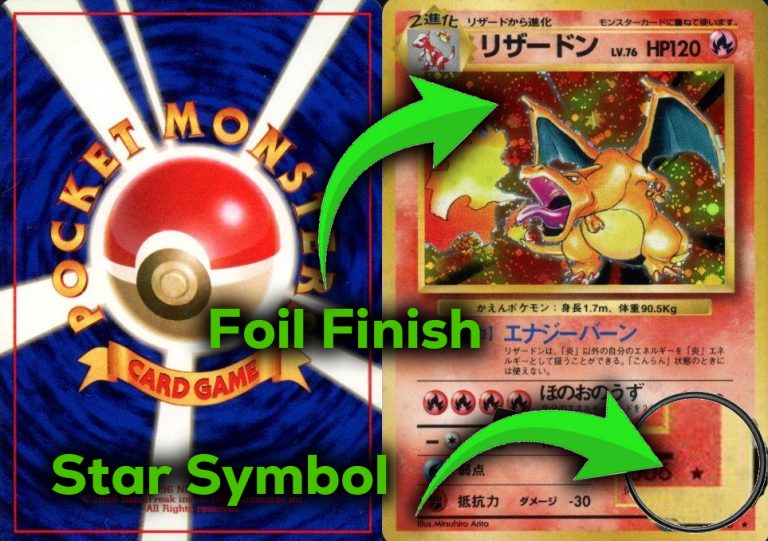
English Holographic Cards: In the early years of Pokémon, holo cards were printed much less frequently for English cards (roughly 3% of the cards). This rarity factor made them stand out, and today, the most valuable English Pokemon cards from the late ’90s and early 2000s will ALWAYS be holographic foil cards.
- First Edition: If your card has a black circle on the left side that says “1st Edition,” then you’re looking at something special. These were printed in much lower quantities compared to the unlimited edition and can be worth anywhere from 2x to 10x times as much as non 1st ed.
- The Nintendo and Game Freak Mark: Cards from the WoTC era (up until 2003) will say Nintendo Game Freak on the bottom of the card. This is a solid indicator of value if the card is also holographic.
Rarities: In the early Pokémon card sets, the rarity of the card was marked with symbols in the bottom right corner:
- Common = Circle
- Uncommon = Diamond
- Rare = Star
While non holo cards can also be valuable, the holographic foil cards are the ones you want! So, when you’re digging through your old cards, keep an eye out for those shiny-holo cards, and cards with 1st Edition stamps!
Indentifiers
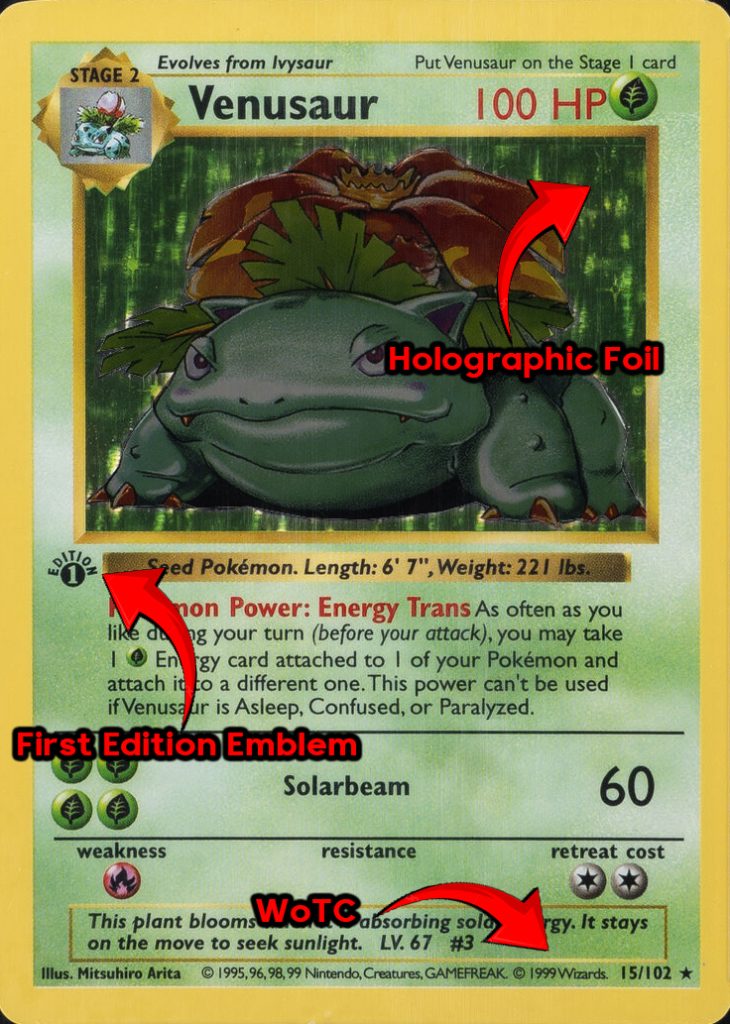

Topps 1999-2004
When determining the potential value of a Topps Pokémon card, there are a few key indicators to look out for:
Rare Chrome Variants
Some Topps Pokémon cards are more valuable because they come from rarer, and shorter print run variants. Topps Chrome Pokemon Trading Cards Series 1 & 2 (2000) are particularly scarce. keep an eye out for cards marked ‘Spectra‘ , ‘Sparkle‘ & ‘Tekno‘, and iconic character cards such as Charizard, Blastoise, Venusaur, & Pikachu!
Chrome can be easily distinguished from regular Topps Pokemon. They are about twice as thick and have a hard plastic coat!
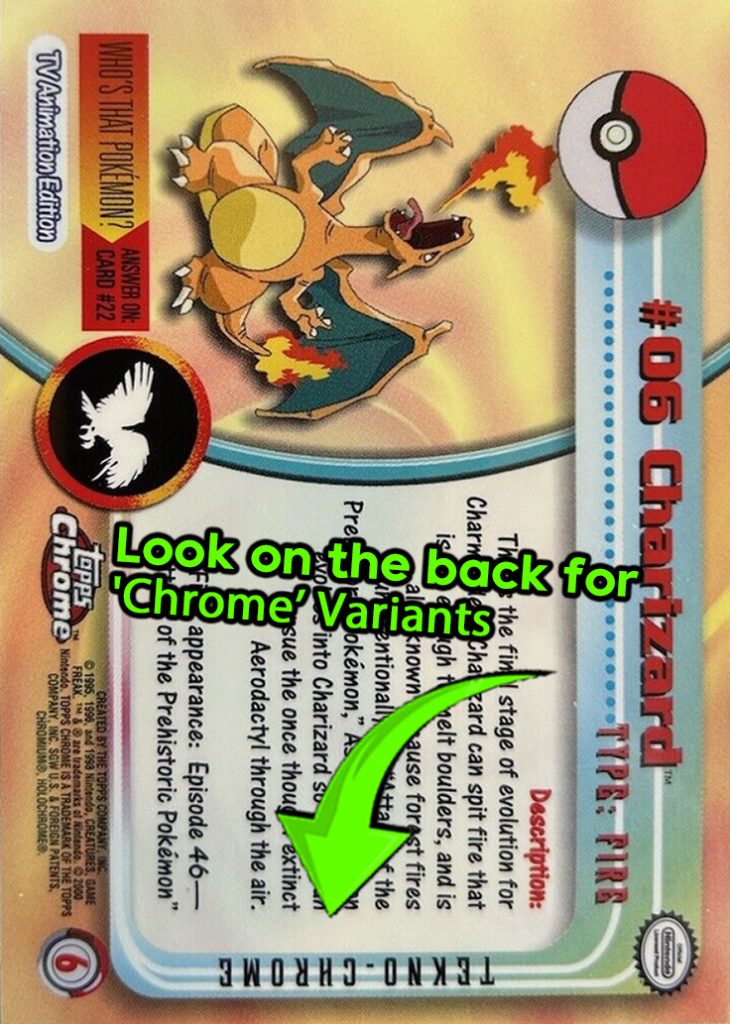

Mid Era (2003-2011)
From 2003 to 2011, the Pokémon TCG went through some changes. Here’s what you need to know:
EX Cards & Reverse Foils: In 2003, Pokémon introduced the EX cards, which were essentially stronger, more collectible cards. Reverse foil patterns also came into play, where the foiling is on the border, instead of the art box. Even though the foil printing rate increased during this era, holo cards, especially EX, are still the ones to keep an eye on.
Rarity: While foil cards became more common in this era, some commons and uncommons got the foil treatment too. So while rare cards still hold the most value, don’t overlook any shiny versions of commons and uncommons from this era.
Nintendo and Game Freak Mark: Cards from this era will still show the Nintendo Game Freak mark. If you’re not seeing this, you’re likely dealing with a Modern-era card.
Indentifiers


Modern ERA
Modern Era (2011-Present)
The most recent Pokémon cards, starting in 2011, can be trickier to identify as valuable. The frequency of holographic cards increased, making it harder to tell what’s worth something. Here’s what to look for in this era:
Full Art Cards: The most valuable cards from this era tend to be Full Art cards, like EX, GX, V, and VMax cards. These have artwork that stretches across the whole card, making them visually distinct. These cards stand out from regular cards due to their design.
- Secret Rares: These cards can be espescially valuable as they are printed at much lower frequency. They can be identified by their card number exceeding the set number.
Indentifiers
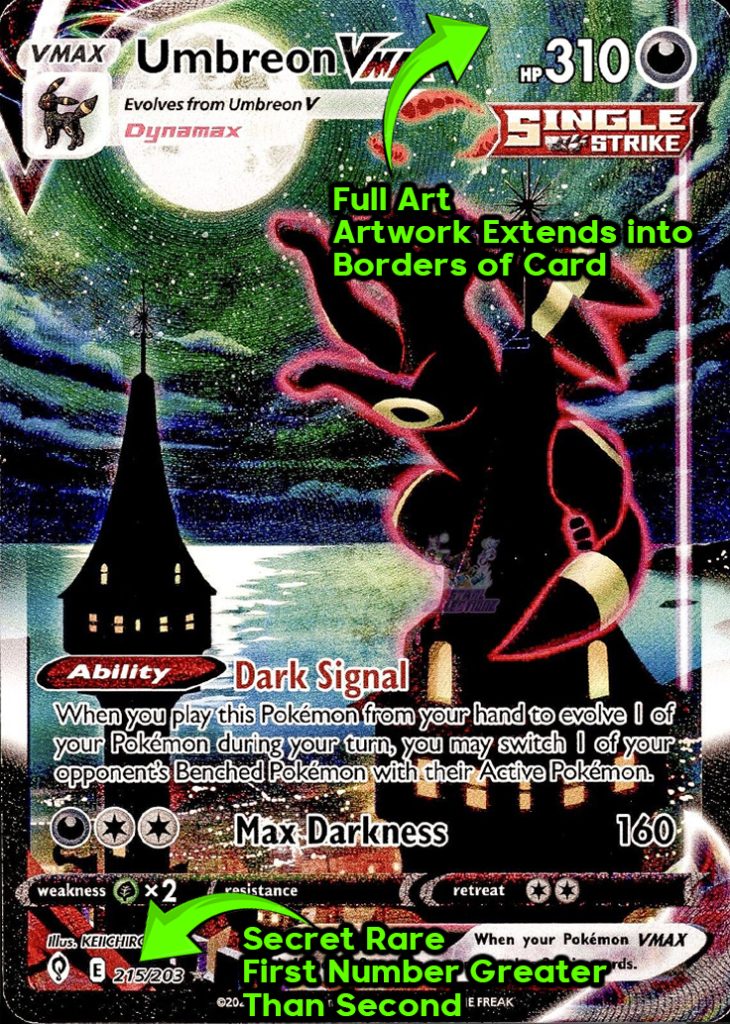
Conditions
One of the most important factors when determining a card’s value is its condition.
Unlike other card games, Pokémon card value isn’t usually driven by play-ability in the game, but rather their rarity and condition. Cards in mint condition will will fetch a much higher sales price, while cards with wear and tear will decrease in value.
Here is an extreme example of the importance condition plays in determining the value of a card:
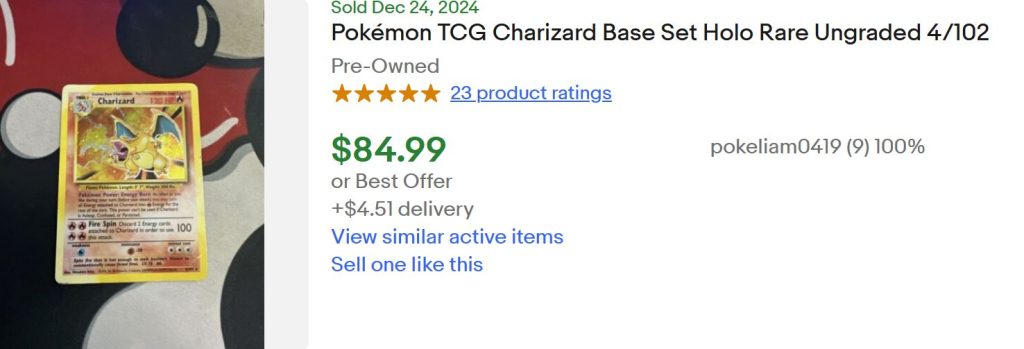
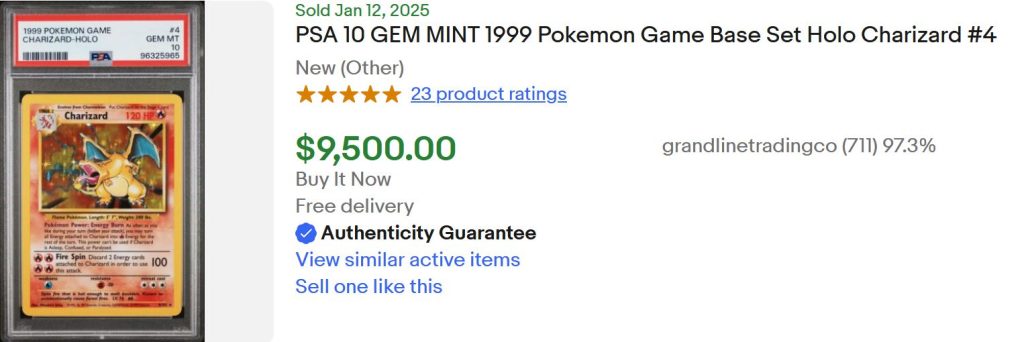
Graded Cards
It’s unwise to ever purchase cards based on their potential grades when they’re ungraded.
To the untrained eye, a card might look like it’s a 9 or even a 10, but an experienced collector or professional grader could easily find flaws that drop the grade to a 5 or lower. Cards fresh off the factory line are often graded as 9s because of the minor imperfections that naturally come from the mass production process, especially when it comes to centering. Centering refers to how the card is positioned in the printing press, and it can affect the overall grading score. Other factors, like surface quality, corners, and edges, will also influence the grade, which is why it’s so important not to assume a card will grade as highly as it seems.
At First Glance This Charizard Below Appears Flawless
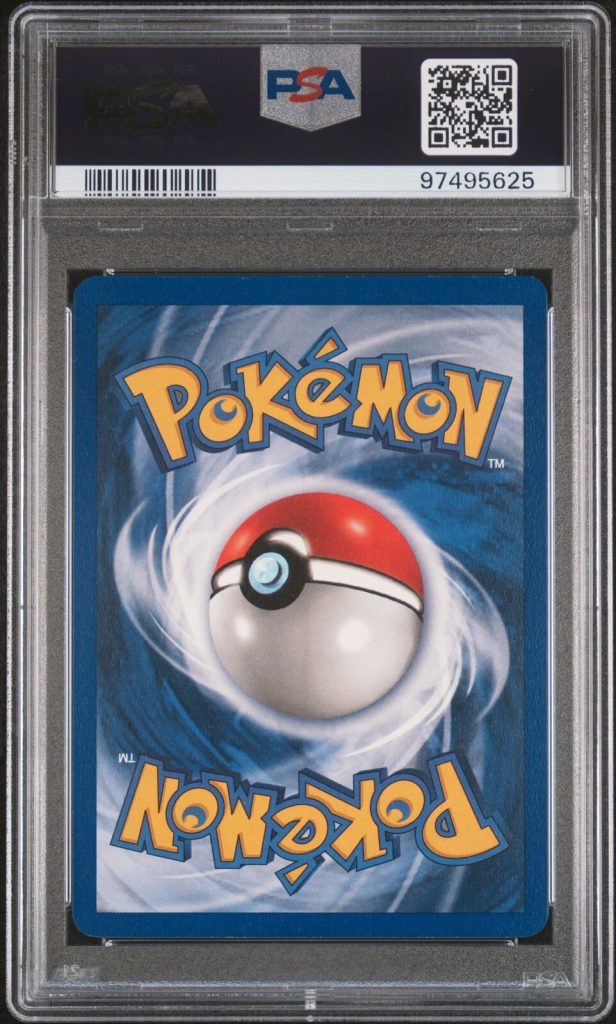
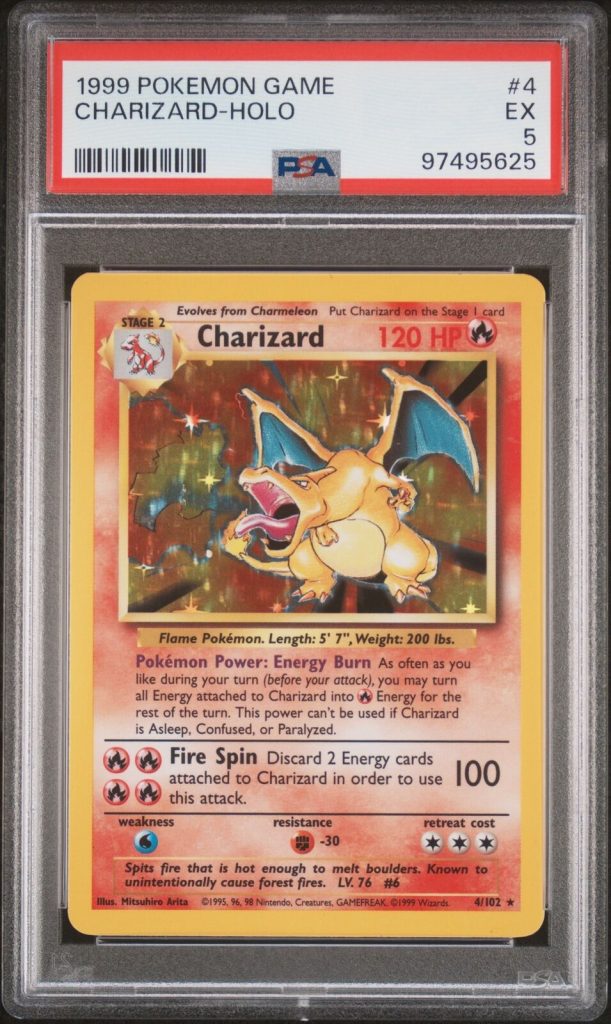
While your Pokémon cards may look like they have the potential to grade high, it’s important to understand that they cannot be valued based on their potential grade for several reasons. First, grading is subjective, meaning different graders might have slightly different opinions on what constitutes a “perfect” card. Secondly, there are membership fees, grading fees, supplies, turn around times, labor and other costs associated with getting a card graded. Most importantly, ungraded cards cannot be valued as if they have already been graded… because they’re not graded.
Conclusion
We hope this guide has helped you better understand how to assess the value of your Pokémon cards!
If you have cards you’re looking to sell, or if you’re simply curious to know more about their worth, don’t hesitate to reach out to us. We’d love to help you explore the value of your cards and assist you with selling them if you choose. Feel free to contact us anytime, and we’ll be happy to guide you through the process. Happy collecting, and may your cards bring you big rewards!
